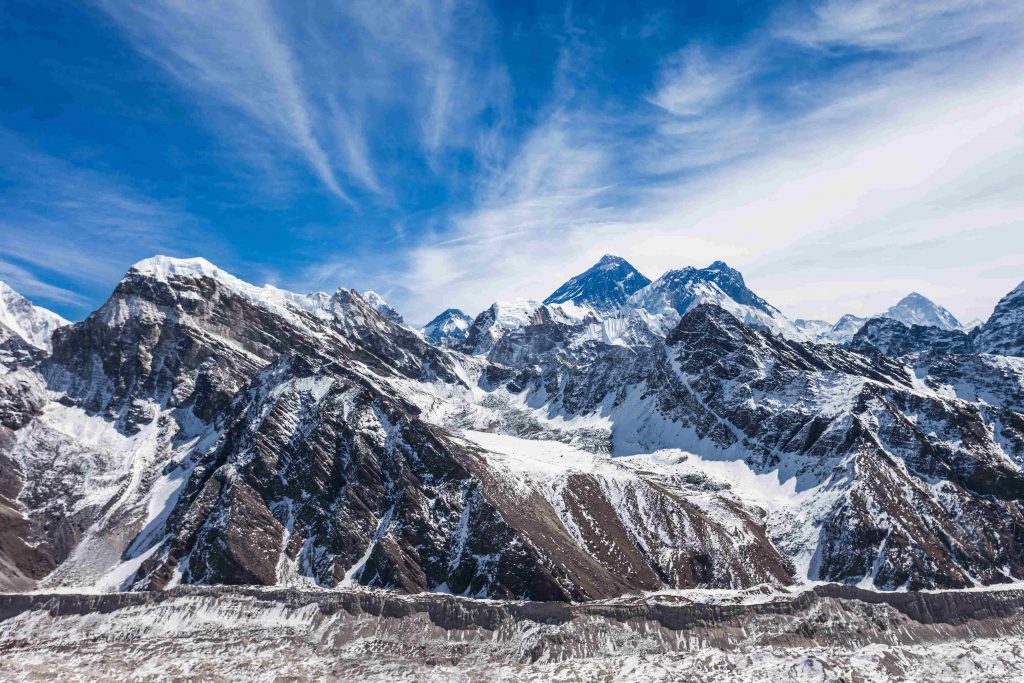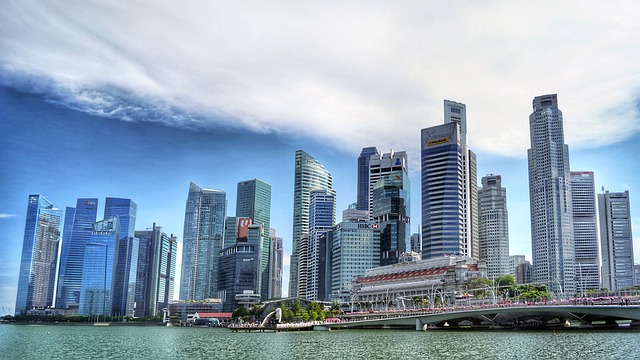
Nepal caters to beautiful tourist attractions and mesmerising life-size Nepal’s mountains. Here are the scenic views and tallest mountains you need to add to your travelling to Nepal bucket list to make memories for a lifetime.
All of us know that Nepal’s mountains are packed with wondrous travel experiences and mesmerising views. The Himalayas, Asia’s largest mountain chain and one of the world’s youngest mountain ranges, stretches over 2,400 kilometres across Nepal, China, Bhutan, India, and Pakistan. The Himalayas in Nepal are the tallest of these five nations, occupying the east central sector of the enormous Himalayan mountain range. Nepal is home to eight of the world’s fourteen eight-thousanders, either entirely or near the border with India and China. The following are the seven tallest Nepal’s mountains
Nepal’s Tallest Travel Destinations
As overwhelming as it sounds, Nepal is an immersive travel experience that sets it apart from any other tourist destination. Nepal’s mountains and peaks were first opened for climbing in 1949. The Nepal government has since released 414 peaks for climbing, jointly administered by the Department of Tourism and the Nepal Mountaineering Association.
Did you know?
Maurice Herzog and Louis Lachenal were the first to step foot on an 8000 m peak on the summit of Mt. Annapurna on June 3rd, 1950.
Sir Edmund Hillary and Tenzing Norgay Sherpa stood atop the world’s tallest mountain, Everest, on May 29, 1953, three years after the first ascent of Mt. Annapurna’s 8000m summit. By 1960, eighty-four major and minor expeditions had visited the Nepal Himalaya. Kanchenjunga and Makalu were climbed in 1955, followed by Lhotse and Manaslu in 1956, and Dhaulagiri in 1960.
List of Famous Mountains Located in Nepal:
- Mount Everest
- Mount Kangchenjunga
- Mount Lhotse
- Mount Cho Oyu
- Mount Makalu
- Mount Manaslu
- Mount Annapurna
1. Mount Everest (8,848.86 m)
Mount Everest, the world’s highest peak, is located in Nepal and reaches a height of 8,848.86 metres. The peak is located in the Mahalangur Himal subrange of the Himalayas, on the Nepal-China border. The peak is known as “Sagarmatha” by the Nepali government and the Nepali people, which means “the Head in the Great Blue Sky” in Nepali. Tibetans have revered the mountain for millennia, referring to it as “Chomolungma,” which translates to “Holy Mother.” Expect to get closer to nature and enjoy snow-capped views. The best time to climb is April to mid-June.
- First Climbers: Sir Edmund Hillary and Tenzing Norgay in 1953.
2. Mount Kangchenjunga (8,598 m)
Mount Kangchenjunga, Nepal’s second tallest peak after Nepal’s Mount Everest, rises to an elevation of 8,598 metres. The peak is located near the Nepal-India border in the Kangchenjunga section of the Himalayan Mountain Range. Mount Kangchenjunga is the world’s third-tallest mountain and one of Nepal’s highest peaks. Three of Kanchenjunga’s five major peaks are on the Nepal-India border, and the other two are in Nepal’s Taplejung District. The best time to visit Mount Kangchenjunga is from April to June. The first climbers were Joe Brown and George Band, two English mountaineers, who achieved the feat on May 25, 1955.
3. Mount Lhotse (8,516 m)
With an elevation of 8,516 metres, Mount Lhotse is the world’s fourth-tallest mountain and Nepal’s third-highest peak. The peak is located in the Mahalangur Himal region of the Himalayan Mountain Range near Nepal’s Mount Everest and is part of the Everest massif. Over 371 climbers had reached the summit of Mount Lhotse as of December 2008, with about 20 of them dying along the way. The best time to visit Mount Lhotse is April to May. The first climbers were Swiss mountaineers Ernst Reiss and Fritz Luchsinger who finished the summit on May 18, 1956.
4. Mount Cho Oyu (8,188 m)
Mount Cho Oyu, at 8,188 metres, is Nepal’s fifth highest peak and the world’s sixth-highest peak. It is the most significant peak in the Khumbu sub-division of the Mahalangur Himal region of the Himalayas, and it is located on the Nepal-China border. Mount Cho Oyu is the second most climbed peak after Nepal’s Mount Everest, and it is considered the easiest of all of Nepal’s peaks to climb. You have to try this one. The best time to visit Mount Cho Oyu is from May to September. Its first climbers were Eric Shipton, Edmund Hillary, and George Lowe.
5. Mount Makalu (8,485 m)
Mount Makalu, at 8,485 metres, is Nepal’s fourth-highest peak and the world’s fifth-highest mountain. The peak is in the Mahalangur range of the Himalayas, on the Nepal-China border, and is known for its pyramid-shaped summit. Interesting, right? Makalu-Barun National Park in Nepal encompasses Mount Makalu and its surrounding high peaks and mesmerising views. The best time to visit Mount Makalu is from April to Mid-June. French mountaineers Jean Couzy and Lionel Terray, on May 15, 1955, became the first ones to climb Mount Makalu’s peak.
6. Mount Manaslu (8,163 m)
Mount Manaslu is Nepal’s seventh-highest peak and the world’s eighth-highest peak, standing at 8,163 metres. The mountain is found in the Mansiri Himal subrange of the Nepalese Himalayas in the Gorkha District of Nepal. The summit had been climbed 297 times as of 2008, with 53 people dying in the process. Crazy, right? To protect the unique peak, the “Manaslu Conservation Area” was established in December 1998. The best time to travel here is March-May. A team led by Toshio Imanishi and Gyalzen Norbu ascended Mount Manaslu on May 9, 1956.
7. Mount Annapurna (8,091 m)
Mount Annapurna I is Nepal’s eighth highest peak and the tenth highest mountain in the world, standing at 8,091 metres. The Annapurna massif is found in north-central Nepal and is part of the Himalayan Mountain Range. Annapurna I Main, Nepal’s highest peak in the Annapurna range, is the tallest. When compared to the other eight-thousanders, Mount Annapurna I, like all other high mountains, is extremely difficult to climb and has the highest death-to-summit ratio. The best time to travel to Mount Annapurna is from September to November. French mountaineers Maurice Herzog and Louis Lachenal on June 3, 1950 were the first ones to conquer this peak.
People, stay safe!
Tip for Non-climbers
If climbing the infamous mountains isn’t your thing, you can still marvel at its beauty and majesty by taking a scenic flight, which is available from a variety of local airlines. Between the hours of 7 and 9 a.m., all flights leave Kathmandu. View the spectacular array of lakes, glaciers, rivers, and gorges below as you float above the clouds and over snowcapped peaks. The majority of the planes have clear, non-tinted windows, which make for great photo opportunities. You’ll want to photograph this scene!
Best time to visit Nepal
The best time to visit Nepal is between October and December, when the weather is dry, and visibility is good. Trekking in Nepal is also enjoyable in the autumn (September-November) and spring (late February-mid-April). The monsoon washes away the dust, and the spring days are warmer and longer.
Travel Tips
Travelling to new tourist attractions can be thrilling and exhausting at the same time. Even if you have planned your trip to bits and made sure of every tiny detail, it can get scary. It’s okay! That’s why you don’t have to worry. Here are a few safety tips and health precautions for you:
If you’re fortunate enough to be invited into a Nepali home, remember to take off your shoes first.
- Keep a water bottle or an energy drink in your bag at all times.
- Leave the locations exactly as you found them. Carry a bag to throw your trash in it.
- Keep your cash and valuables safe and locked at your place of stay. Avoid carrying them in busy places or markets.
- Whatever your pleasure, be aware of the dangers and proceed with caution when embarking on new adventures.
- If you’re travelling solo, refrain from being over-friendly with people. They might take it as a sign of disrespect.
- Have your documents or one government-issued ID on hand.
- When visiting tourist attractions, pay attention to the rules.
Conclusion
Enjoy Nepal’s mountains’ gorgeous views, the thrill of adventure, captivating art, and delectable cuisine. You’ll have a great time because of the magnificent views, spiritual connections, and being in the middle of nature.
Discover the beauty of Nepal and embark on some beautiful tourist attractions and have travel experiences that will last a lifetime. Thomas Cook Nepal Packages will ensure that your travel experience is immaculate and so easy that you will not have to worry about anything. Visit our website for some great offers on hotels and stays. What are you waiting for?
FAQs
When is the ideal time to travel to Nepal?
The best time to visit Nepal is between October and December when the weather is dry, and visibility is good. Trekking in Nepal is also enjoyable in the autumn (September-November) and spring (late February-mid-April). The monsoon washes away the dust, and the spring days are warmer and longer.
What are some of the best Nepalese dishes to try?
The following are some must-try local dishes:
- Sel Roti (Sel Roti)
- Gundruk
- Yomari
- Tongba
- Thukpa
- Dal Bhat
How would you describe Nepal’s climate?
The hot, dry season has average temperatures of 28 degrees Celsius in the hilly parts and 40 degrees Celsius in the lowlands. In comparison, the frigid winter months have temperatures ranging from 7 to 23 degrees Celsius in the lowlands and below freezing in the high sections.
How long should a trip to Nepal last?
It depends on where you want to go on your bucket list. In most cases, a 10–14 day itinerary is ideal for Nepal.





Related Post
10 Famous Pilgrimage Destinations for Mahashivratri 2025 Celebrations
Mahashivratri Festival 2025: Date, History, and Key Celebrations
15 Best Street Food Places in Bangalore
Top Kumbh Mela Places & Locations to Visit for a Spiritual Journey
Kumbh Mela 2025 Date & Place: Full Schedule, Location & Travel Tips
Everything About the Next Maha Kumbh Mela 2025 – Dates & Travel Tips
Places to Visit in Varanasi: A First-Timer's Guide to the Holy City
10 Facts About Kashmir Valley: Kashmir Weather, History, Culture and More
11 Reasons Why Kashmir is called "Paradise on Earth"
Places to Visit in Ayodhya: A Pilgrim’s Paradise